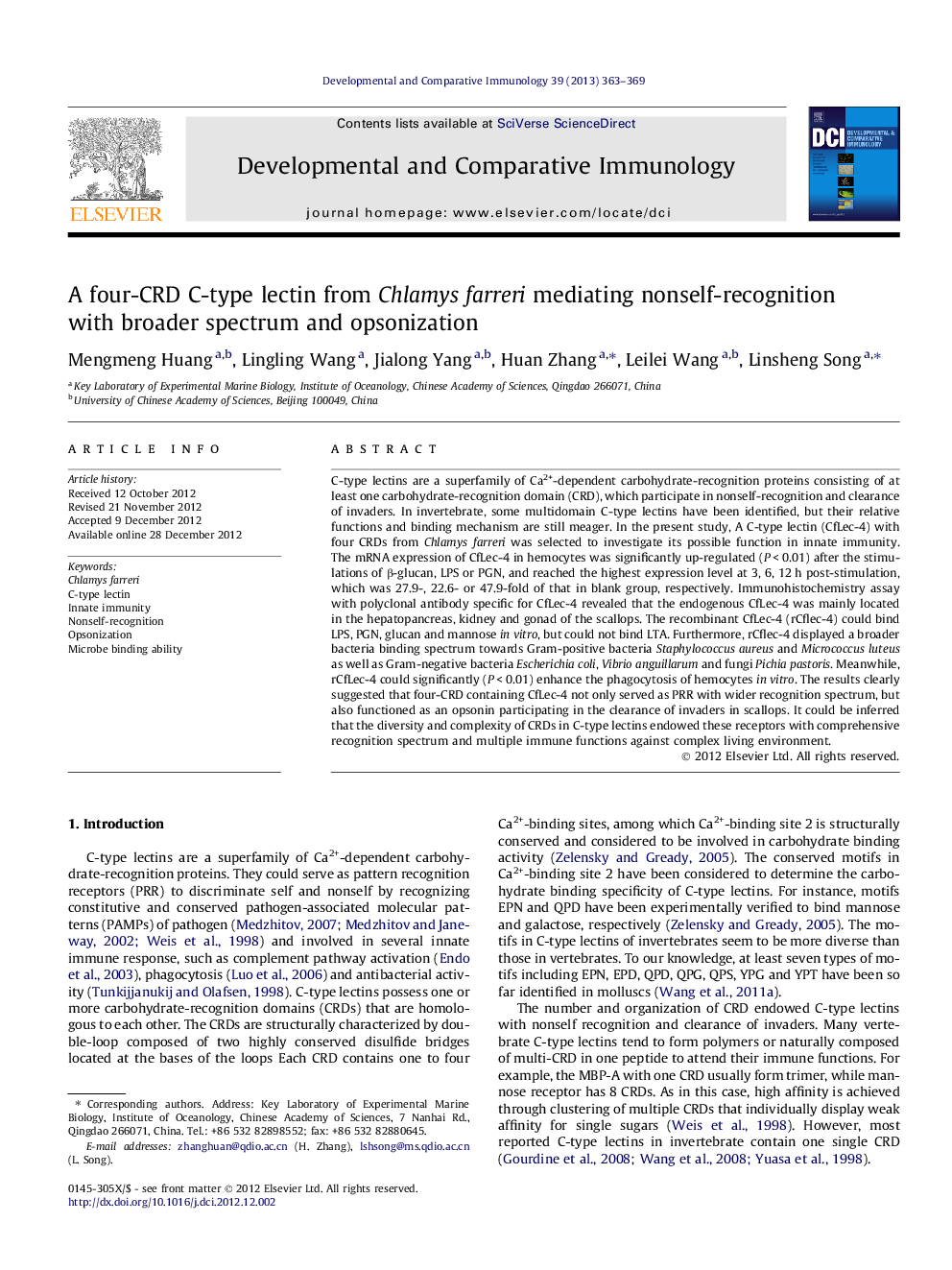| Article ID | Journal | Published Year | Pages | File Type |
|---|---|---|---|---|
| 2429311 | Developmental & Comparative Immunology | 2013 | 7 Pages |
C-type lectins are a superfamily of Ca2+-dependent carbohydrate-recognition proteins consisting of at least one carbohydrate-recognition domain (CRD), which participate in nonself-recognition and clearance of invaders. In invertebrate, some multidomain C-type lectins have been identified, but their relative functions and binding mechanism are still meager. In the present study, A C-type lectin (CfLec-4) with four CRDs from Chlamys farreri was selected to investigate its possible function in innate immunity. The mRNA expression of CfLec-4 in hemocytes was significantly up-regulated (P < 0.01) after the stimulations of β-glucan, LPS or PGN, and reached the highest expression level at 3, 6, 12 h post-stimulation, which was 27.9-, 22.6- or 47.9-fold of that in blank group, respectively. Immunohistochemistry assay with polyclonal antibody specific for CfLec-4 revealed that the endogenous CfLec-4 was mainly located in the hepatopancreas, kidney and gonad of the scallops. The recombinant CfLec-4 (rCflec-4) could bind LPS, PGN, glucan and mannose in vitro, but could not bind LTA. Furthermore, rCflec-4 displayed a broader bacteria binding spectrum towards Gram-positive bacteria Staphylococcus aureus and Micrococcus luteus as well as Gram-negative bacteria Escherichia coli, Vibrio anguillarum and fungi Pichia pastoris. Meanwhile, rCfLec-4 could significantly (P < 0.01) enhance the phagocytosis of hemocytes in vitro. The results clearly suggested that four-CRD containing CfLec-4 not only served as PRR with wider recognition spectrum, but also functioned as an opsonin participating in the clearance of invaders in scallops. It could be inferred that the diversity and complexity of CRDs in C-type lectins endowed these receptors with comprehensive recognition spectrum and multiple immune functions against complex living environment.
► CfLec-4 contains four CRDs among which three are similar. ► rCfLec-4 could bind more PAMPs: LPS, PGN, mannan, glucan with different affinity. ► It had wide microbe binding spectrum: Gram-positive/negative bacteria and fungi. ► It could enhance phagocytosis of hemocytes against bacteria.
